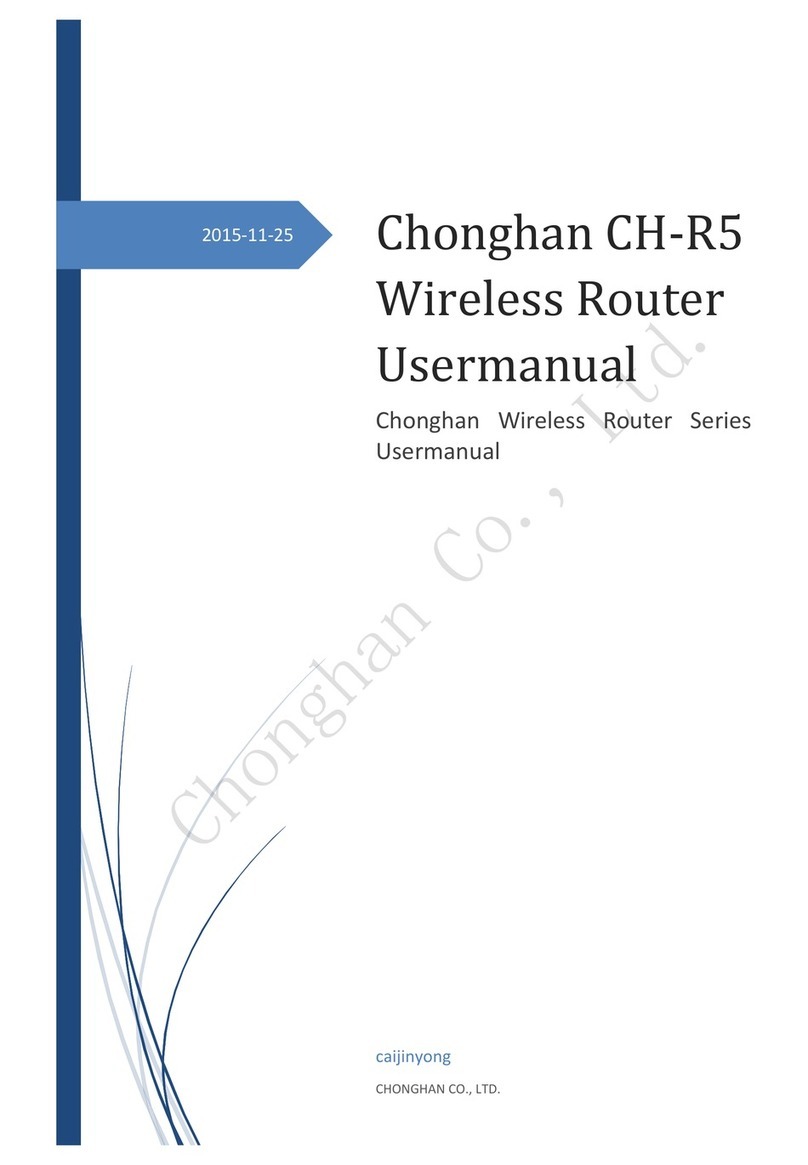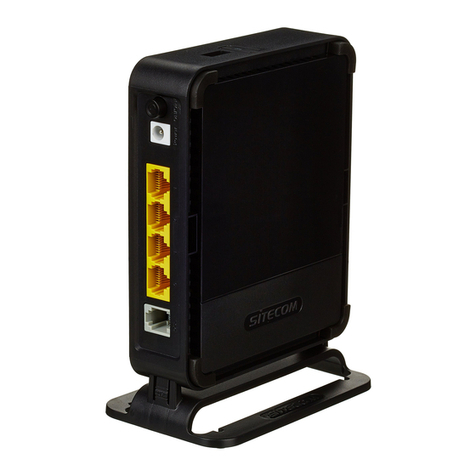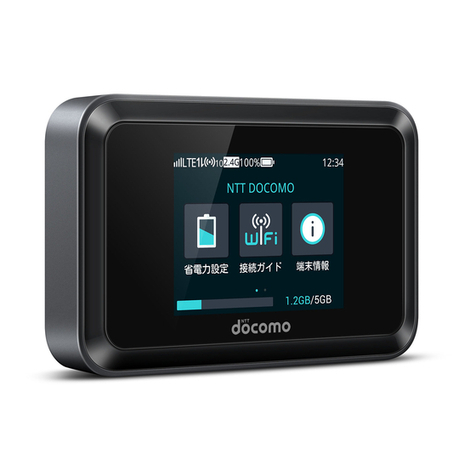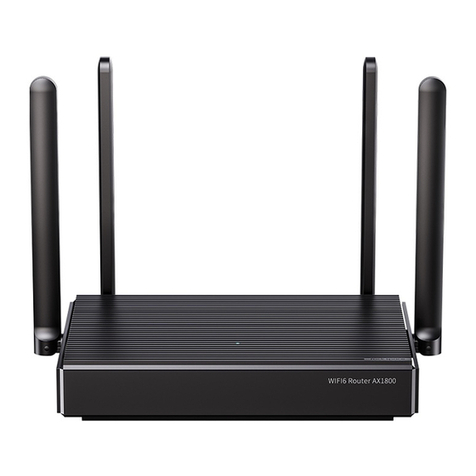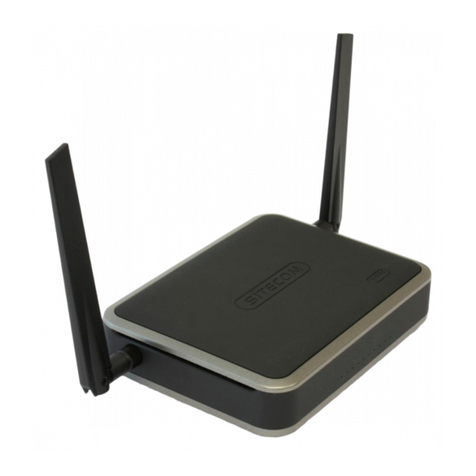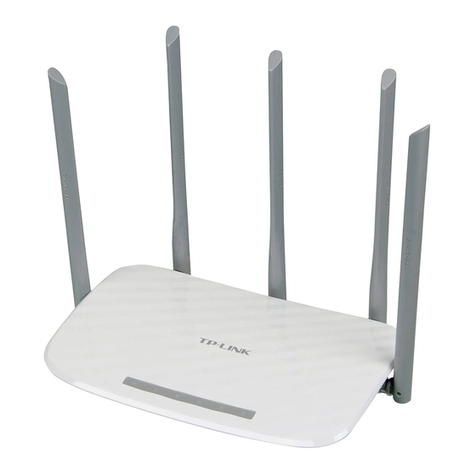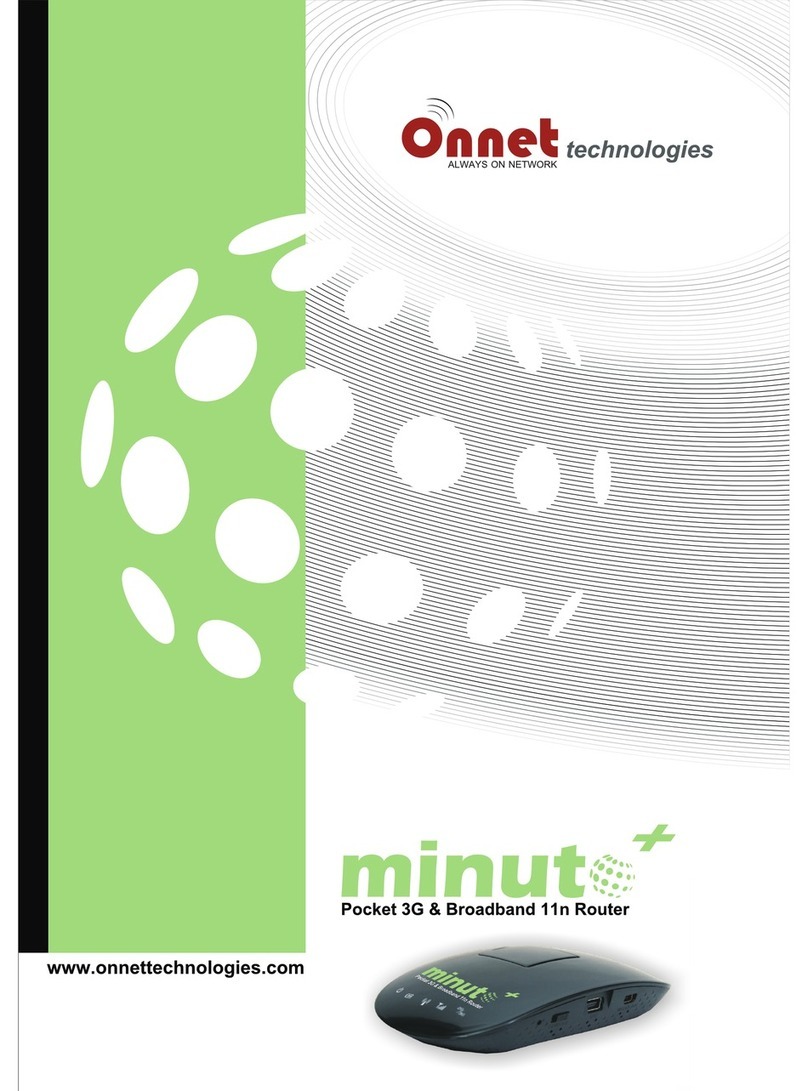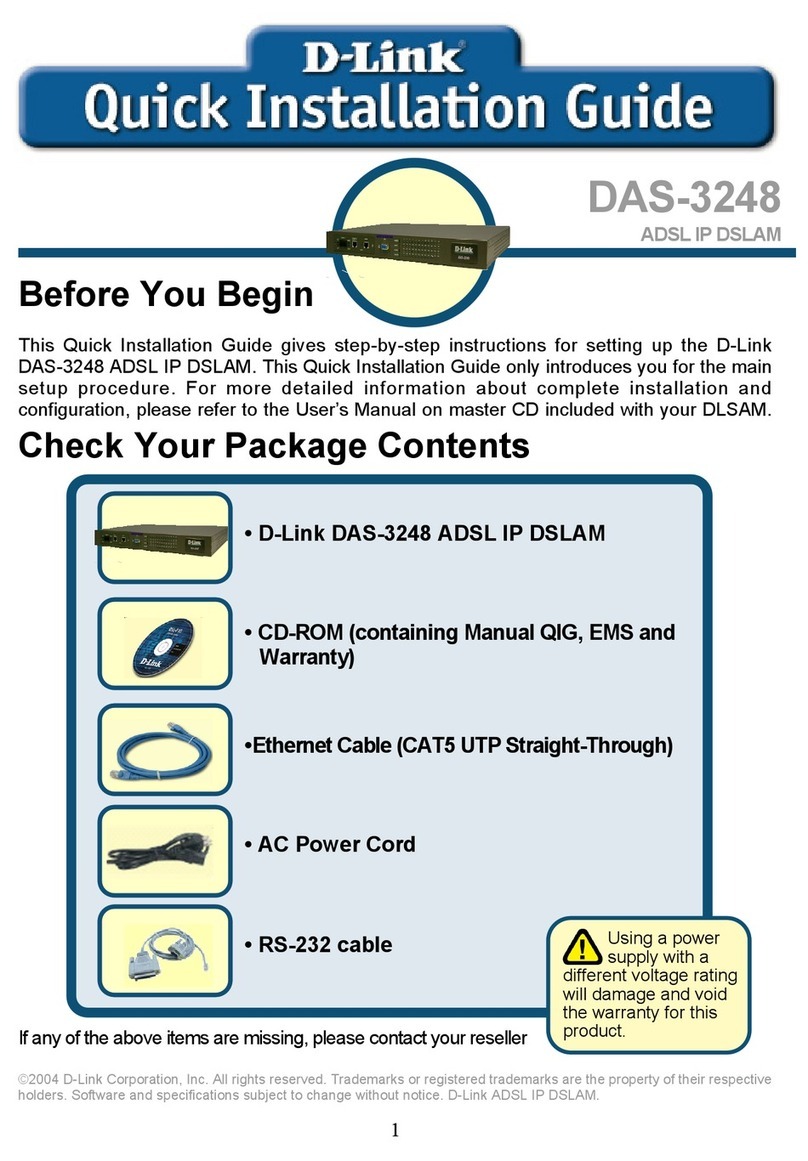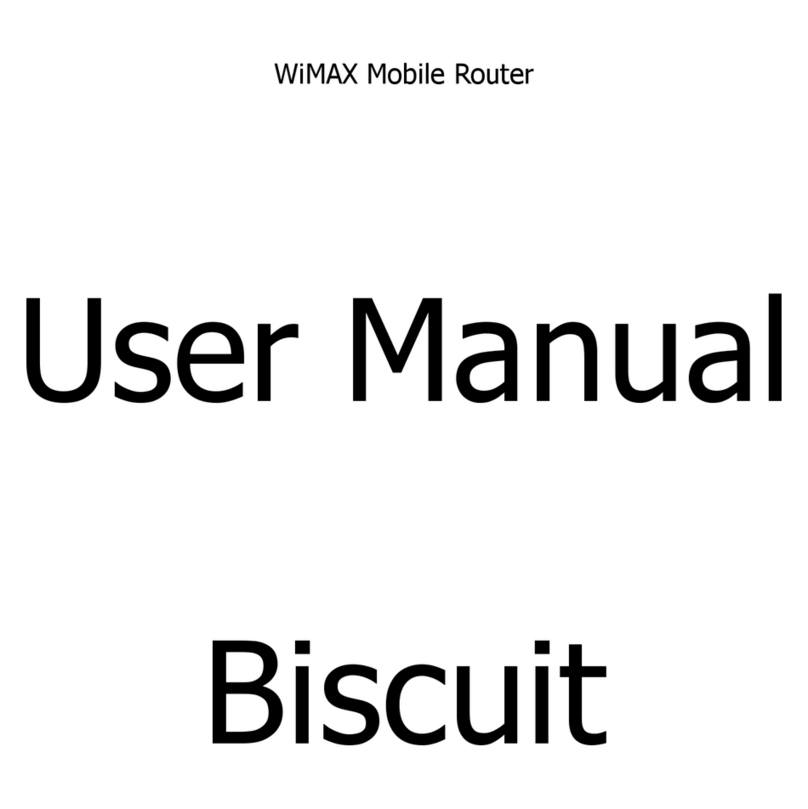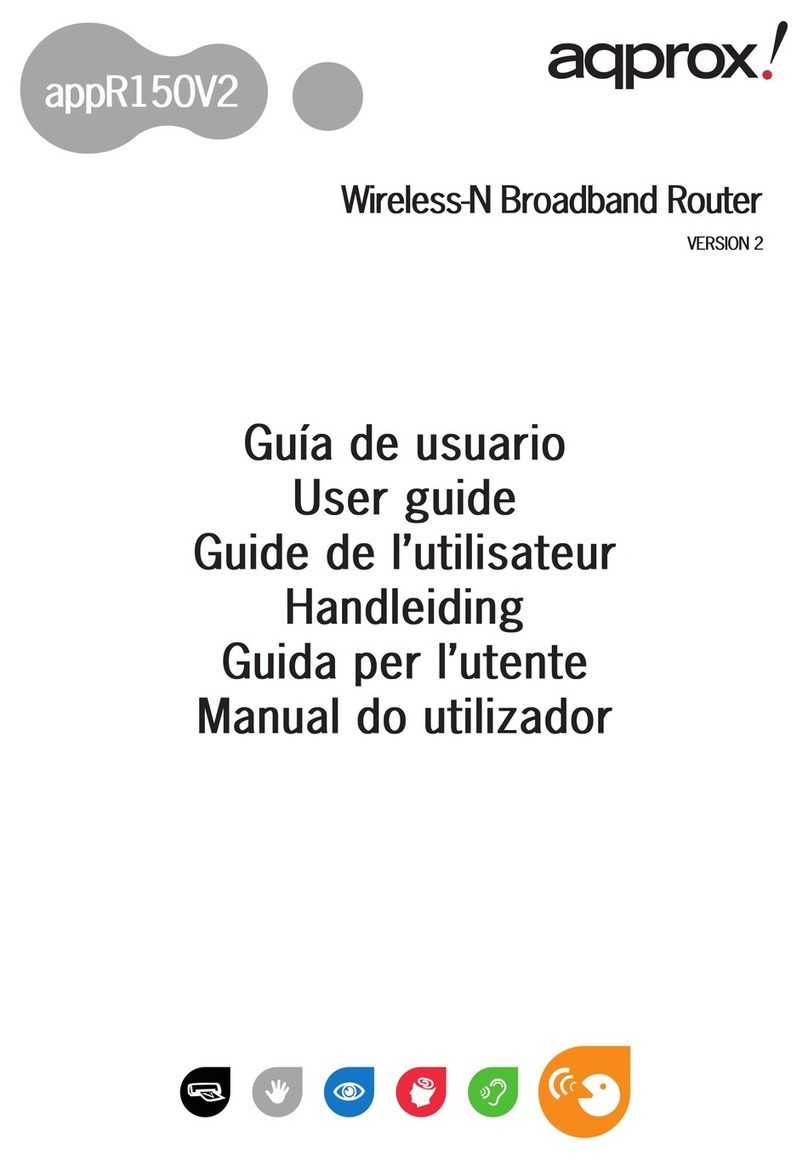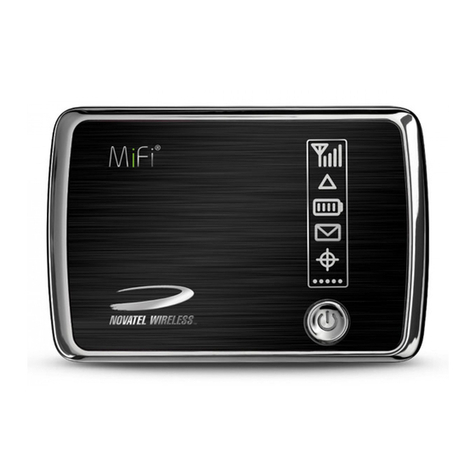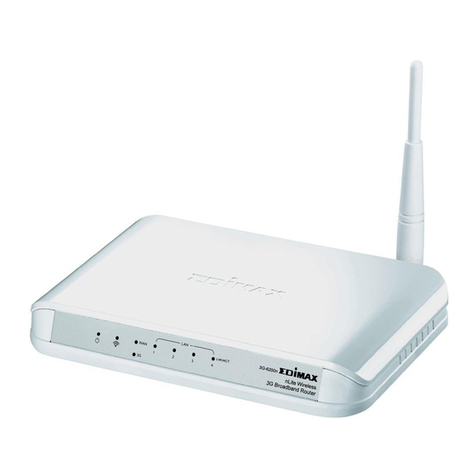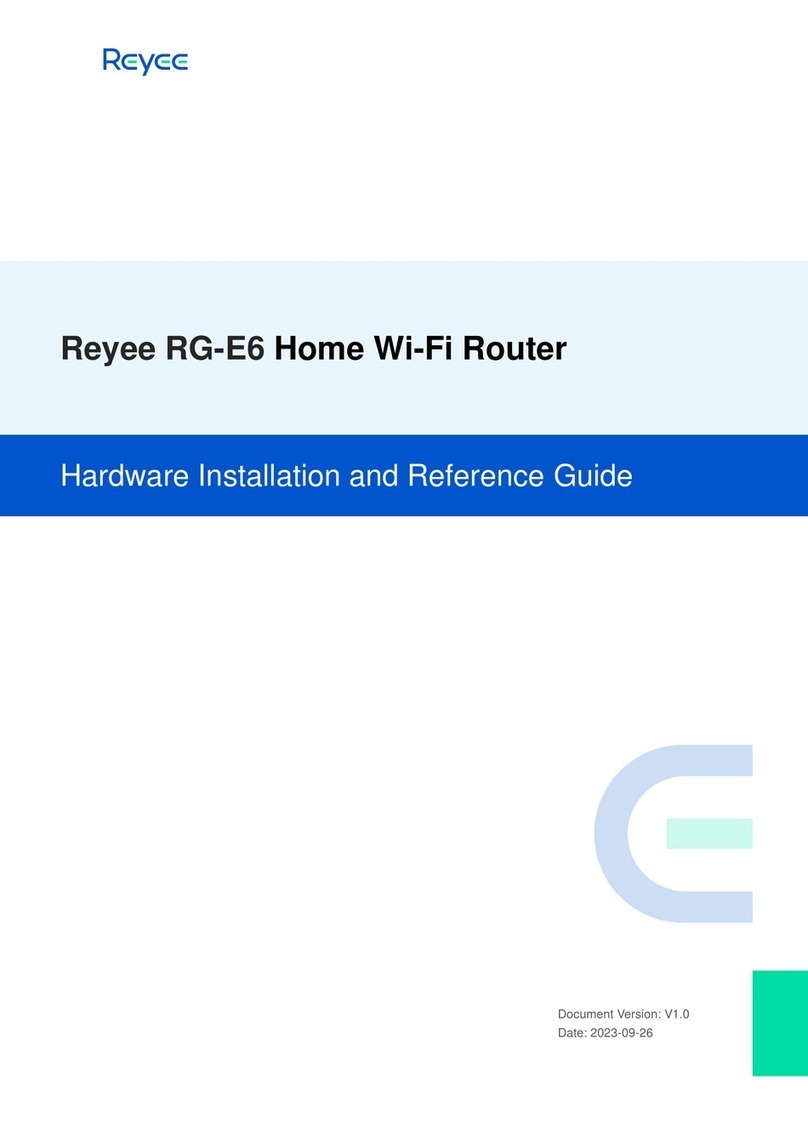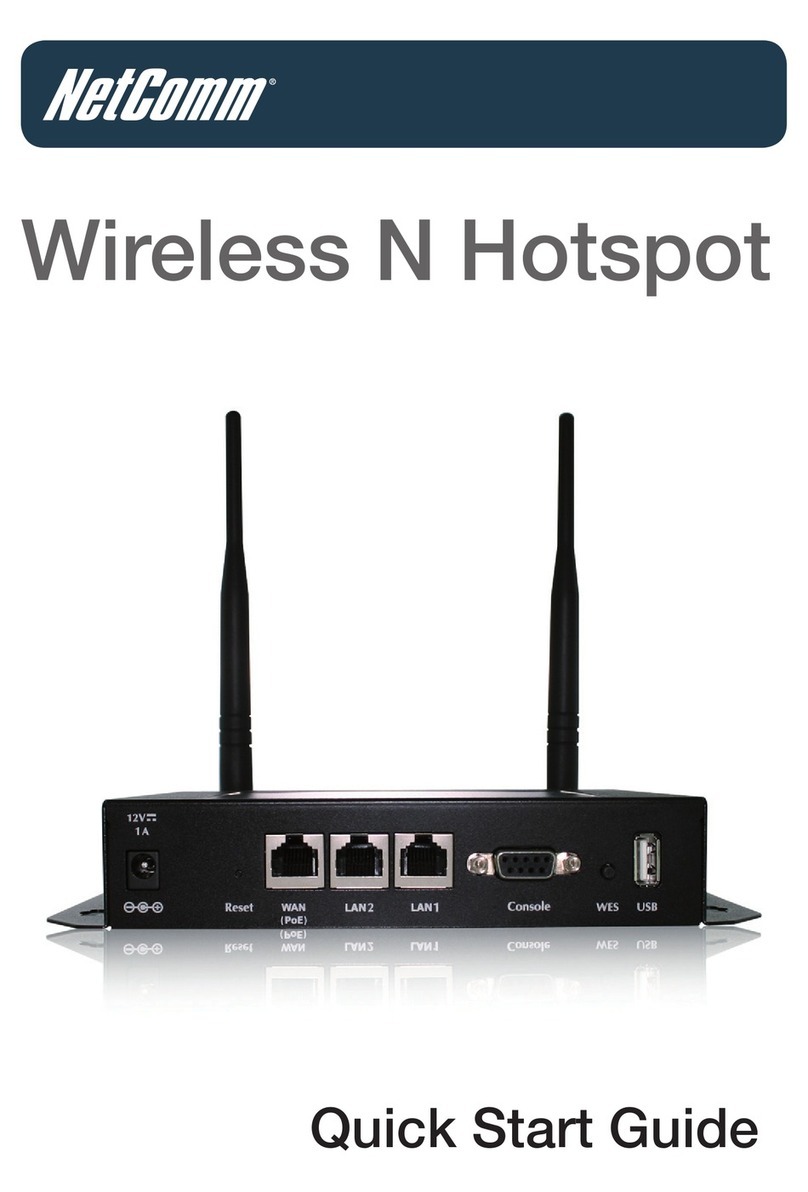Chonghan CH-R3 User manual

2016-1-8
Chonghan CH-R3
Wireless Router
Usermanual
Chonghan Wireless Router Series
Usermanual
C
aijinyong
CHONGHAN CO., LTD.

CAIJINYONG
2016-1-8
CHONGHAN CH-R3 WIRELESS ROUTER USERMANUAL
页2
崇瀚科技
Chonghan
Power by Chonghan

CAIJINYONG
2016-1-8
CHONGHAN CH-R3 WIRELESS ROUTER USERMANUAL
页3
Important Notice
Due to the nature of wireless communications, transmission and reception of data can never
be guaranteed. Data may be delayed, corrupted (i.e., have errors) or be totally lost. Although
significant delays or losses of data are rare when wireless devices such as the Chonghan Wireless
device are used in a normal manner with a well‐constructed network, the Chonghan Wireless
device should not be used in situations where failure to transmit or receive data could result in
damage of any kind to the user or any other party, including but not limited to personal injury,
death, or loss of property. Chonghan Wireless accepts no responsibility for damages of any kind
resulting from delays or errors in data transmitted or received using the Chonghan Wireless device,
or for failure of the Chonghan Wireless device to transmit or receive such data.
Safety and Hazards
Do not operate the Chonghan Wireless device in areas where blasting is in progress, where
explosive atmospheres may be present, near medical equipment, near life support equipment, or
any equipment which may be susceptible to any form of radio interference. In such areas, the
Chonghan Wireless device MUST BE POWERED OFF. The Chonghan Wireless device can transmit
signals that could interfere with this equipment. Do not operate the Chonghan Wireless device in
any aircraft, whether the aircraft is on the ground or in flight. In aircraft, the Chonghan Wireless
device MUST BE POWERED OFF. When operating, the Chonghan Wireless device can transmit
signals that could interfere with various onboard systems.
Note: Some airlines may permit the use of cellular phones while the aircraft
is on the ground and the door is open. Chonghan Wireless device may be
used at this time.
The driver or operator of any vehicle should not operate the Chonghan Wireless device while
in control of a vehicle. Doing so will detract from the driver or operator’s control and operation of
that vehicle. In some states and provinces, operating such communications devices while in control
of a vehicle is an offence.
Limitations of Liability
This manual is provided “as is”. Chonghan Wireless makes no warranties of any kind, either
expressed or implied, including any implied warranties of merchantability, fitness for a particular
purpose, or noninfringement. The recipient of the manual shall endorse all risks arising from its
use.
The information in this manual is subject to change without notice and does not represent a

CAIJINYONG
2016-1-8
CHONGHAN CH-R3 WIRELESS ROUTER USERMANUAL
页4
commitment on the part of Chonghan Wireless. CHONGHAN WIRELESS AND ITS AFFILIATES
SPECIFICALLY DISCLAIM LIABILITY FOR ANY AND ALL DIRECT, INDIRECT, SPECIAL, GENERAL,
INCIDENTAL, CONSEQUENTIAL, PUNITIVE OR EXEMPLARY DAMAGES INCLUDING, BUT NOT
LIMITED TO, LOSS OF PROFITS OR REVENUE OR ANTICIPATED PROFITS OR REVENUE ARISING OUT
OF THE USE OR INABILITY TO USE ANY CHONGHAN WIRELESS PRODUCT, EVEN IF CHONGHAN
WIRELESS AND/OR ITS AFFILIATES HAS BEEN ADVISED OF THE POSSIBILITY OF SUCH DAMAGES OR
THEY ARE FORESEEABLE OR FOR CLAIMS BY ANY THIRD PARTY.
Notwithstanding the foregoing, in no event shall Chonghan Wireless and/or its affiliates
aggregate liability arising under or in connection with the Chonghan Wireless product, regardless
of the number of events, occurrences, or claims giving rise to liability, be in excess of the price paid
by the purchaser for the Chonghan Wireless product.
Copyright
© 2010-2015 Chonghan Co., Ltd. All rights reserved.
Trademarks
“Chonghan®” is filed or registered trademark of Chonghan Co., Ltd. in P. R .C hina and/or in
other countries.
Windows® is a registered trademark of Microsoft Corporation.
QUALCOMM® is a registered trademark of QUALCOMM Incorporated. Used under license.
Other trademarks are the property of the respective owners.
Contact Information
Company Chonghan Co., Ltd.
Sales Desk Phone +86 (755) 26458200
Hours 8:30 AM to 6:00 PM GMT+8
Email [email protected]
FAX +86 (755) 26458200 x 805
Post
Rm 407, Multi-functional Bldg B, Guanlong Estate, Nanshan Dist, Shenzhen, P.R.C.
Web http://www.szchonghan.com/

CAIJINYONG
2016-1-8
CHONGHAN CH-R3 WIRELESS ROUTER USERMANUAL
页5
Contents
Important Notice...............................................................................................................................3
Safety and Hazards............................................................................................................................3
Limitations of Liability .......................................................................................................................3
Copyright...........................................................................................................................................4
Trademarks........................................................................................................................................4
Contact Information..........................................................................................................................4
Contents ............................................................................................................................................5
1. Overview ...................................................................................................................................7
1.1. Document History .........................................................................................................7
1.2. References.....................................................................................................................7
1.3. Abbreviations ................................................................................................................7
1.4. Producs List ...................................................................................................................8
2. Network brief ............................................................................................................................9
2.1. 2G..................................................................................................................................9
2.2. 2.5G ...............................................................................................................................9
2.3. 3G..................................................................................................................................9
2.4. 4G..................................................................................................................................9
3. Features...................................................................................................................................10
4. Application ..............................................................................................................................10
5. Hardware Interface .................................................................................................................11
5.1. 1LAN ............................................................................................................................11
5.2. 1WAN1LAN..................................................................................................................12
6. Software Interface...................................................................................................................13
7. Web Interface..........................................................................................................................15
7.1. Status...........................................................................................................................15
7.1.1. Summary .........................................................................................................15
7.1.2. Log ...................................................................................................................16
7.1.3. Interface ..........................................................................................................16
7.2. Mode...........................................................................................................................17
7.3. 3G................................................................................................................................18
7.3.1. Setup ...............................................................................................................18
7.3.2. FlowCtrl ...........................................................................................................18
7.3.3. Break-Detection ..............................................................................................19
7.3.4. DDNS ...............................................................................................................19
7.4. VPN..............................................................................................................................20
7.4.1. PPTP.................................................................................................................20
7.5. LAN..............................................................................................................................20
7.5.1. Setup ...............................................................................................................20
7.5.2. Binding ............................................................................................................21
7.5.3. DHCP-Table ......................................................................................................21
7.6. Wireless.......................................................................................................................22
7.6.1. Basic ................................................................................................................22
7.6.2. Security............................................................................................................22

CAIJINYONG
2016-1-8
CHONGHAN CH-R3 WIRELESS ROUTER USERMANUAL
页6
7.6.3. Advanced.........................................................................................................23
7.6.4. WDS.................................................................................................................23
7.6.5. Station List.......................................................................................................23
7.6.6. Mac Access......................................................................................................24
7.7. Security........................................................................................................................24
7.7.1. Firewall ............................................................................................................24
7.7.2. Website-Block..................................................................................................25
7.7.3. MAC-Filter .......................................................................................................25
7.7.4. Access-Restrictions..........................................................................................26
7.7.5. Port-Triggering.................................................................................................26
7.7.6. DoS ..................................................................................................................27
7.8. Server ..........................................................................................................................28
7.8.1. Virtual-Server ..................................................................................................28
7.8.2. Application ......................................................................................................29
7.8.3. DMZ.................................................................................................................29
7.8.4. NAT ..................................................................................................................30
7.8.5. Com2Server.....................................................................................................30
7.8.6. Sms ..................................................................................................................31
7.9. Routing ........................................................................................................................31
7.9.1. Table ................................................................................................................31
7.9.2. Static................................................................................................................32
7.10. Admin ......................................................................................................................32
7.10.1. Management...................................................................................................32
7.10.2. Time-setting ....................................................................................................33
7.10.3. Backup&Restore..............................................................................................33
7.10.4. Firmware-Upgrade ..........................................................................................34
7.10.5. Restart .............................................................................................................34
7.10.6. Factory-Defaults ..............................................................................................35
7.10.7. Password .........................................................................................................35
7.11. Logout .....................................................................................................................35
8. Product List .............................................................................................................................36

CAIJINYONG
2016-1-8
CHONGHAN CH-R3 WIRELESS ROUTER USERMANUAL
页7
1. Overview
The CH-R3 wireless router is a industry router allowing network devices attach to cellular
networks. This capability means that remote and mobile devices can attach to Internet hosts using
the public wireless networks.
The CH-R3 is easy to install, reducing the reliance on the end customer and enables direct
access to your remote LAN devices for control and monitoring purposes.
It enables companies to access equipment of mobile remotely, remote networks and isolated
sites
The Router are seeking reliable, flexible and cost-effective data channel to build their
information system. Many applications such as ATM, POS, SCADA and surveillance system will
require data channels covered all country; this brings a bright future for mobile data networks
applications.
Note: Though all features are documented in this manual, new features
may still be in beta stage at publication and therefore may not yet be
validated. Please refer to the Customer Release Note for complete and
detailed information regarding beta and validated features at time of
release.
1.1. Document History
Version Date Comments Author
1.00 2013-09-23 Initial Release Version. Samuel
2.00 2015-04-09 Update to 2.1.6.2 interface. Samuel
2.01 2016-01-08 Change Contact Caijinyong
1.2. References
CHONGHAN CHR3WIRELESS ROUTER QUICKSTART ENG
CHONGHAN CHR3C3Z8 EVDO WIFI ROUTER DATASHEET ENG
CHONGHAN CHR3G6H9 HSPA+ WIFI ROUTER DATASHEET ENG
CHONGHAN CHR3G6H13 HSPA+ WIFI ROUTER DATASHEET ENG
CHONGHAN CHR3G7Z16 LTE WIFI ROUTER DATASHEET ENG
1.3. Abbreviations
APN Access Point Name
DAC Digital Analog Converter
GGSN Gateway GPRS Support Node

CAIJINYONG
2016-1-8
CHONGHAN CH-R3 WIRELESS ROUTER USERMANUAL
页8
GPRS General Packet Radio Service
IP Internet Protocol
KB Kilobyte
MCC Mobile Country Code
MNC Mobile Network Codes
MS Mobile Station
PDU Protocol Data Unit
PLMN Public Land Mobile Network
RSSI Received Signal Strength Indication
SMA
Small Adapter
SMS Short Message Services
CDMA Code Division Multiple Access
RIP Routing Information Protocol
OSPF Open Shortest Path First
QoS Quality of Service
DNS Domain Name System
DDNS Dynamic Domain Name Server
DHCP Dynamic Host Configuration Protocol
NAT Network Address Translation
DMZ Demilitarized Zone
PPP Point to Point Protocol
PPTP Point to Point Tunneling Protocol
UIM User Identity Model
VPN Virtual Private Network
1.4. Producs List
Product Network Work Temp Humidity Size Weight
CH-R3C3Z8 EV-DO Rev. A 800MHz -
10°C~+55°C
5%~95% 100x60x25mm 240g
1900MHz
CH-R3G6H9 HSPA+ 850MHz -
10°C~+65°C
5%~90%
900MHz
1800MHz
1900MHz
2100MHz
CH-
R3G6H13
HSPA+ 850MHz -
10°C~+65°C
5%~90%
900MHz
1800MHz
1900MHz
2100MHz
CH-R3G7Z16 LTE TDD 900MHz -
10°C~+55°C
5%~95%
1800MHz

CAIJINYONG
2016-1-8
CHONGHAN CH-R3 WIRELESS ROUTER USERMANUAL
页9
1900MHz
2100MHz
2. Network brief
2.1. 2G
2G (or 2-G) is short for second-generation wireless telephone technology. Second generation
2G cellular telecom networks were commercially launched on the GSM standard in Finland by
Radiolinja (now part of Elisa Oyj) in 1991. Three primary benefits of 2G networks over their
predecessors were that phone conversations were digitally encrypted; 2G systems were
significantly more efficient on the spectrum allowing for far greater mobile phone penetration
levels; and 2G introduced data services for mobile, starting with SMS text messages.
2.2. 2.5G
2.5G ("second and a half generation") is used to describe 2G-systems that have implemented
a packet-switched domain in addition to the circuit-switched domain. It does not necessarily
provide faster services because bundling of timeslots is used for circuit-switched data services
(HSCSD) as well.
The first major step in the evolution of GSM networks to 3G occurred with the introduction
of General Packet Radio Service (GPRS). CDMA2000 networks similarly evolved through the
introduction of 1xRTT. The combination of these capabilities came to be known as 2.5G.
2.3. 3G
3G or 3rd generation mobile telecommunications, is a generation of standards for mobile
phones and mobile telecommunication services fulfilling the International Mobile
Telecommunications-2000 (IMT-2000) specifications by the International Telecommunication
Union. Application services include wide-area wireless voice telephone, mobile Internet access,
video calls and mobile TV, all in a mobile environment. To meet the IMT-2000 standards, a system
is required to provide peak data rates of at least 200 kbit/s. Recent 3G releases, often denoted 3.5G
and 3.75G, also provide mobile broadband access of several Mbit/s to smartphones and mobile
modems in laptop computers.
2.4. 4G
Short for fourth generation, is the fourth generation of mobile telecommunications
technology, succeeding 3G and preceding 5G. A 4G system, in addition to the usual voice and other

CAIJINYONG
2016-1-8
CHONGHAN CH-R3 WIRELESS ROUTER USERMANUAL
页10
services of 3G, provides mobile broadband Internet access, for example to laptops with wireless
modems, to smartphones, and to other mobile devices. Potential and current applications include
amended mobile web access, IP telephony, gaming services, high-definition mobile TV, video
conferencing, 3D television, and cloud computing.
3. Features
Industrial design for small dimension
Robust industrial housing
Secure remote access - Support for up to 4 simultaneous VPN tunnels 6 Mbps 3DES VPN
throughput
SPI/VPN Firewall
NAT Router for Internet Access Sharing
1 10/100 LAN port
250Mhz CPU with hardware-based encryption accelerator
DC5~25V wild rang, lowe comsumer
Watch Dog
4. Application
POS terminals and scanners
Vending machines
Security systems
Remote telemetry and telematics systems
Fleet management and tracking systems
Traffic control and navigation systems
Remote Data Monitor and Control
AMR (automatic meter reading) for power, water, gas, oil meter
Power station monitoring and control
Traffic signals monitor and control
Power distribution network supervision
Central heating system supervision
Weather station data transmission
Hydrologic data acquisition
Parking meter and Taxi Monitor
Telecom equipment supervision (Mobile base station, microwave or optical relay station)

CAIJINYONG
2016-1-8
CHONGHAN CH-R3 WIRELESS ROUTER USERMANUAL
页11
5. Hardware Interface
5.1. 1LAN
Appearance
Interface Description Picture
3G Antenna SMA female
WIFI Antenna SMA female
Sim/Uim Sim/Uim drawer
Sim/Uim withdraw button
LED 3G Off Network offline
Blink Network registing
On 3G online
LED SYS Off System off
Blink System on
LAN RJ45
DC DC 5~15V 1A
TX RS-232 transmit
RX RS-232 receive
GND RS-232 ground
R Reset Press 5s
LED LAN Off LAN offline
Blink Data transmit
On LAN online
LED POW Off Power off
On Power on

CAIJINYONG
2016-1-8
CHONGHAN CH-R3 WIRELESS ROUTER USERMANUAL
页12
5.2. 1WAN1LAN
Appearance
Interface Description Picture
3G Antenna SMA female
WIFI Antenna SMA female
Sim/Uim Sim/Uim drawer
Sim/Uim withdraw button
TX RS-232 transmit
RX RS-232 receive
GND RS-232 ground
PWR Power output
R Reset Press 5s
LED LAN1
Off
Offline
Blink Data transmit
On Online
LED LAN2 Off Offline
Blink Data transmit
On Online
LED 3G Off Network offline
Blink Network registing
On 3G online
LED SYS Off System off
Blink System on
LAN1 RJ45
LAN2 RJ45

CAIJINYONG
2016-1-8
CHONGHAN CH-R3 WIRELESS ROUTER USERMANUAL
页13
DC DC 5~15V 1A
6. Software Interface
The router default LAN IP address is 192.168.10.1.
C:\>ping 192.168.10.1
Pinging 192.168.10.1 with 32 bytes of data:
Reply from 192.168.10.1: bytes=32 time<1ms TTL=64
Reply from 192.168.10.1: bytes=32 time<1ms TTL=64
Reply from 192.168.10.1: bytes=32 time<1ms TTL=64
Reply from 192.168.10.1: bytes=32 time<1ms TTL=64
Ping statistics for 192.168.10.1:
Packets: Sent = 4, Received = 4, Lost = 0 (0% loss),
Approximate round trip times in milli-seconds:
Minimum = 0ms, Maximum = 0ms, Average = 0ms
Make sure you can ping this address, if your connect cable and NIC setting, a same segment
IP address is needed.

CAIJINYONG
2016-1-8
CHONGHAN CH-R3 WIRELESS ROUTER USERMANUAL
页14
Access http://192.168.10.1 via IE or other browser.
Default username: admin
Default password: admin

CAIJINYONG
2016-1-8
CHONGHAN CH-R3 WIRELESS ROUTER USERMANUAL
页15
7. Web Interface
7.1. Status
7.1.1. Summary

CAIJINYONG
2016-1-8
CHONGHAN CH-R3 WIRELESS ROUTER USERMANUAL
页16
7.1.2. Log
7.1.3. Interface

CAIJINYONG
2016-1-8
CHONGHAN CH-R3 WIRELESS ROUTER USERMANUAL
页17
7.2. Mode

CAIJINYONG
2016-1-8
CHONGHAN CH-R3 WIRELESS ROUTER USERMANUAL
页18
7.3. 3G
7.3.1. Setup
7.3.2. FlowCtrl

CAIJINYONG
2016-1-8
CHONGHAN CH-R3 WIRELESS ROUTER USERMANUAL
页19
7.3.3. Break-Detection
7.3.4. DDNS

CAIJINYONG
2016-1-8
CHONGHAN CH-R3 WIRELESS ROUTER USERMANUAL
页20
7.4. VPN
7.4.1. PPTP
7.5. LAN
7.5.1. Setup
Table of contents
Other Chonghan Wireless Router manuals
